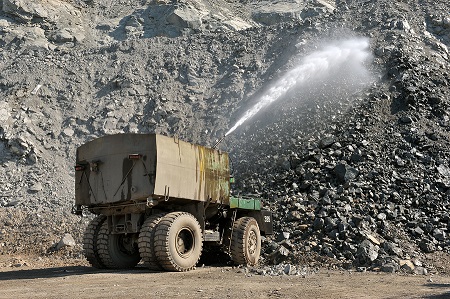The model which was unveiled at the 20th International Congress on Modelling and Simulation (MODSIM2013) aims to forecast future mine water needs and will help the industry address the challenges of both excessive water and insufficient water on mine sites.
The research was conducted in Queensland's Bowen Basin, home to Australia's largest coal reserves, and one of the most highly variable climates in the world.
Professor Damian Barrett, head of CSIRO's Water in the Resources Sector research, said a key challenge for the industry is to maintain mine water storage at an optimal level to ensure water security for mine operations during drought but also to eliminate unregulated discharges during flood periods.
"The coal mining industry is accountable for managing its mine water use, including complying with discharge regulations," Professor Barrett said.
"Our research is demonstrating how to reach the 'Goldilocks' state in water management. That is, not having too much or too little water but having just the right amount of water on mine sites for when it is needed."
The model is depicted through three perspectives: the business perspective capturing the mine operation practices within a mine or across several mines or companies; the environmental perspective representing all the climate change patterns such as rainfall and catchment histories and weather forecast data; and the decision perspective which considers tradeoffs by demonstrating how to develop strategies to best meet business needs while considering environmental constraints and opportunities.
"We applied the scenario model to a number of constructed case studies including single mine sites and multiple mines sites, with the multiple mine site case studies exploring water sharing and trading opportunities among mine sites," Professor Barrett said.
"This methodology provides a rigorous and objective technique for developing management strategies and assessing risk."
The model was developed as part of a suite of broader CSIRO research in the coal mines of the Bowen Basin. Research in the region is providing strategies to help the industry forecast mine water quantity and quality, improve water use efficiency onsite and improve understanding of the impacts of mine water use on regional water.
Professor Barrett concluded: "Through improved seasonal climate forecasts, the assessment of the effectiveness of water sharing and trading among multiple sites and the cost benefit analysis of establishing water management infrastructure, our research is helping to guide the coal industry towards better water management that balances the needs of business with the needs of the environment."















